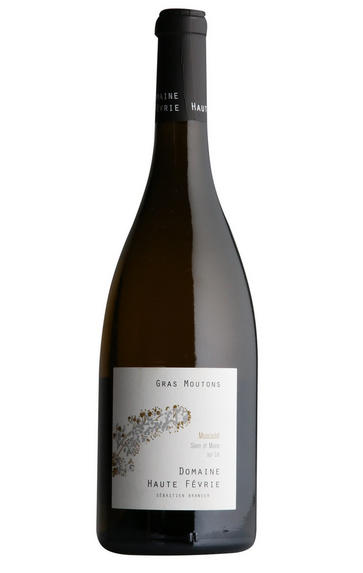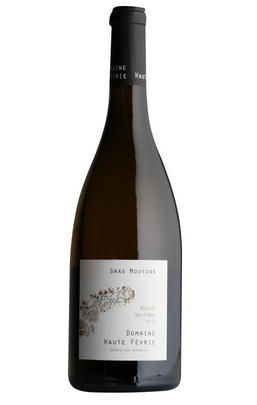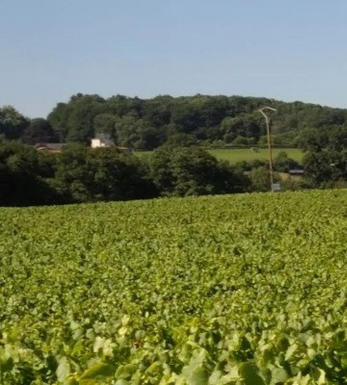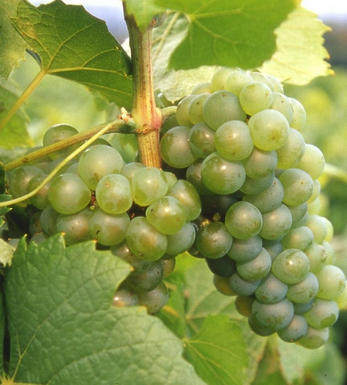
2021 Muscadet Sèvre et Maine sur Lie, Gras Moutons, Domaine la Haute Févrie, Loire

Critics reviews
The elegant, tense 2021 Gras Moutons derives from vines planted on granite and amphibolite soils. A citrussy yet fruity bouquet reveals watermelon, herbs, spring flowers and lemon oil aromas. Tense and pure with a moderately weighted structure, it’s saline, iodine and crystalline with a mouthwatering, lingering finish. This mineral Muscadet has real potential to improve in the cellar.
The estate, led by Sébastien Branger, has a reputation for producing classic wines with a crystal-clear and pure style. I was impressed by Sébastien’s deep knowledge and enthusiasm for viticulture during my visit. Each plot is meticulously tended, and the estate has been certified organic. The Haute Févrie cuvée is of exceptional value and deserves recognition as one of the top values in the region.
Drink 2023 - 2031
Yohan Castaing, Wine Advocate (August 2023)
About this WINE

Domaine la Haute Fevrie, Muscadet
The Domaine "la Haute Févrie" lies 18 km south-east of Nantes, right in the middle of the Muscadet Sèvre et Maine appellation. The estate vines grow on the hills overlooking the Sèvre, between Saint-Fiacre and Monnières. They enjoy optimum ripening conditions and the Muscadet they produce is highly expressive of the soil it grew on.
The estate covers 30 hectares of vineyards, all under the Muscadet Sèvre et Maine AOC. The estate is broken into several plots, each with a different aspect and on different soil: siliceous clay or gravelly and shallow, all on metamorphic rock, resulting in a range of highly individual “clos”: Le Clos de la Févrie, Les Mauguitonnières, Les Gras moutons (Saint-Fiacre), Le Clos Joubert, Le Moulin de la Gustais, Le Clos du Pégatine and many others.
The vines are managed with environmentally friendly principles (no chemical fertilizers, with yield control and grape picking entirely by hand), and according to the Terra Vitis method for sustainable wine growing. All these practices result into Muscadet wines that reflect closely their terroir and the natural characteristics of the grape.

Muscadet de Sevre-et-Maine
Muscadet is an important Loire appellation, accounting for approximately 20 percent of the region's total plantings, almost exclusively of Melon de Bourgogne – a grape imported into the Pay Nantais coastal region during the 17th century by Dutch merchants, as distilling material for their schnapps.
Qualitatively and quantitatively the key AOC is Sèvre-et-Maine, occupying the granitic soils between these two tributaries, and producing – in the right hands – tangy, sea-breezy, light, dry white wines with a distinct Atlantic zing (and a maximum ABV of 12 percent). Melon is also grown elsewhere on schistous and clay soils, imparting a richer if less distinctive character. Those labelled ‘sur lie’ have been left on their lees for up to six months over winter to give the wines extra body and complexity.
Château du Cléray and Domaine de la Jousselinière are both good sources.

Melon de Bourgogne
The most commonly grown grape in the Pays Nantais region of the Loire and the grape behind Muscadet wines. It was first planted in the Loire in the 17th century as the result of a severe frost and the decimation of most of the red varieties. Growers were attracted by the grape's resistance to frost and by its suitability for distillation.
It is a naturally high yielding grape that performs best on schistous and granitic soils. It produces very dry white wines with a distinctive mineral feel as well as almost neutral-flavoured fruit characteristics. Seldom seen outside the Pays Nantais, although there are some plantings in its native Burgundy.


Buying options
Add to wishlist
Description
The elegant, tense 2021 Gras Moutons derives from vines planted on granite and amphibolite soils. A citrussy yet fruity bouquet reveals watermelon, herbs, spring flowers and lemon oil aromas. Tense and pure with a moderately weighted structure, it’s saline, iodine and crystalline with a mouthwatering, lingering finish. This mineral Muscadet has real potential to improve in the cellar.
The estate, led by Sébastien Branger, has a reputation for producing classic wines with a crystal-clear and pure style. I was impressed by Sébastien’s deep knowledge and enthusiasm for viticulture during my visit. Each plot is meticulously tended, and the estate has been certified organic. The Haute Févrie cuvée is of exceptional value and deserves recognition as one of the top values in the region.
Drink 2023 - 2031
Yohan Castaing, Wine Advocate (August 2023)
wine at a glance
Delivery and quality guarantee